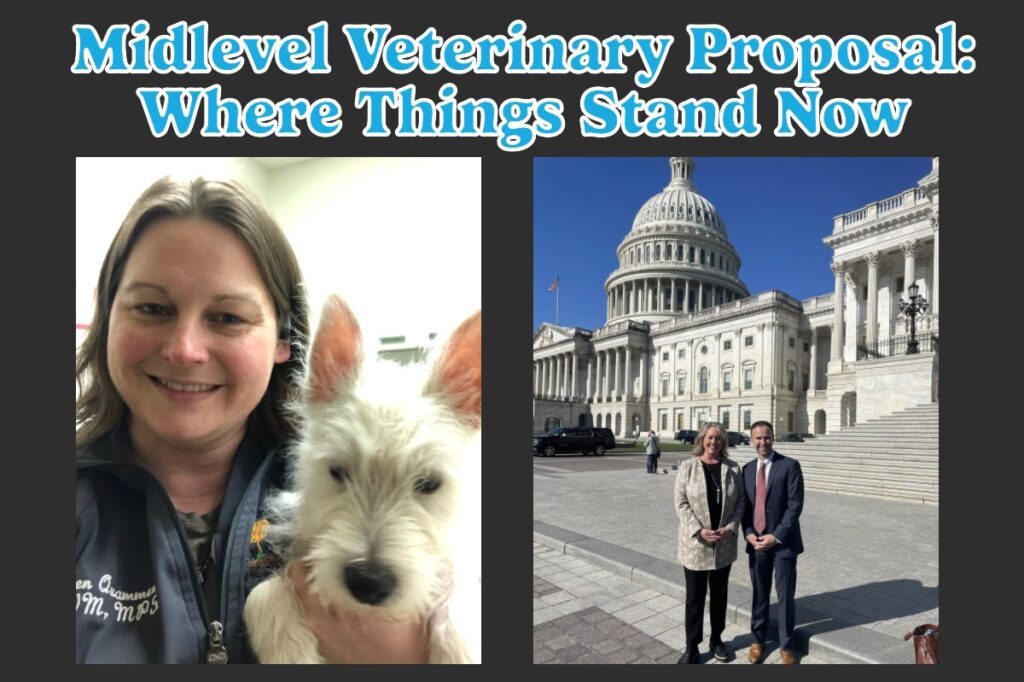Colorado’s Midlevel Veterinary Position: Where Things Stand Now

Veterinary professionals across the country are watching closely as Colorado creates rules and regulations for a new role in veterinary medicine: the Veterinary Professional Associate (VPA). Colorado is meant to have rules and regulations created by January 2026 and there are pages and pages of public comments received already.
With a series of public hearings scheduled in 2025, Colorado’s Department of Regulatory Agencies (DORA) has received written comments from veterinarians, technicians, veterinary associations, and concerned citizens.
And the verdict? 🔴 More than 80% of commenters oppose the current proposal.
As someone who’s spoken out about this before, I believe innovation should never come at the expense of safety, clarity, or the integrity of our profession. Let’s dig into what’s happening—and why it matters.
💼 What Is the VPA?
The VPA role (created through Colorado Proposition 129) creates a midlevel veterinary position – something in between, yet still ill-defined, veterinary technicians and veterinarians. According to proponents, VPAs would be allowed to:
- Diagnose medical conditions
- Prescribe medications
- Perform surgical procedures
- Work under indirect veterinary supervision
But here’s the concern: the educational path is still vague, and the level of supervision isn’t clearly defined, and public safety and animal safety are paramount concerns.
⚖️ What the Public Comments Say so far
Opposition came from veterinarians, veterinary technicians, and professional organizations like AVMA and Colorado VMA. Supporters included individuals and industry stakeholders who see it as a way to expand care access, including Colorado Humane (formerly Denver Dumb Friends League, DDFL).
🚩 The Big Concerns
- Training Gaps
Many fear the proposed pathway doesn’t offer the depth or rigor required to safely diagnose or perform surgery. - Team Disruption
Credentialed veterinary technicians—many of whom have fought for licensure—feel devalued and bypassed. - Oversight Ambiguity
The definition of “indirect supervision” lacks clarity, raising liability and safety concerns. - No Pilot, No Data
Unlike other healthcare roles that evolved over decades, this proposal has no peer-reviewed studies or structured pilot backing it.
🔄 There Are Alternatives
I believe we can address veterinary access challenges in safer, smarter ways:
- Better technician utilization and credentialing — especially since 8 states still lack tech licensure.
- Innovative technology and telehealth solutions — with appropriate oversight.
- Loan repayment and incentives to retain DVMs in underserved areas, including rural veterinary medicine.
Let’s focus on solutions that elevate all members of the team—without skipping crucial safety and training steps.
💬 Why This Matters to Me
As a former veterinary technician, practicing veterinarian, and someone who has led medical teams and contributed to national workforce conversations, I believe deeply in supporting our profession’s evolution—without compromising patient care or devaluing team members.
I’m not against change. I’m for smart, safe progress.
📅 What Happens Next?
A public hearing on this proposed legislation will be held by DORA on May 7, 2025.
Click here to view the full proposal and participate
Who is Jen?
As a modern veterinarian with diverse roles, including Chief Veterinary Officer at Otto, I have developed technology solutions for veterinary practices and fostered collaboration within the field. My commitment to learning, leadership, and organized veterinary medicine, along with my ability to connect with others, drives my vision as the next AVMA President-Elect.

